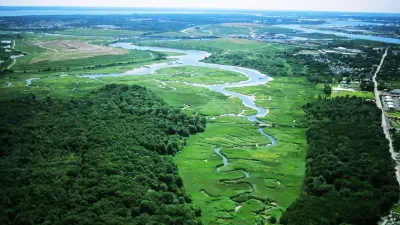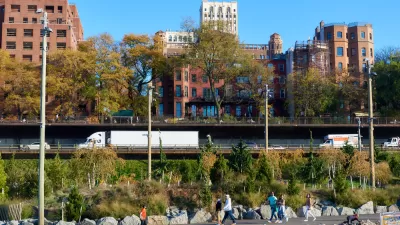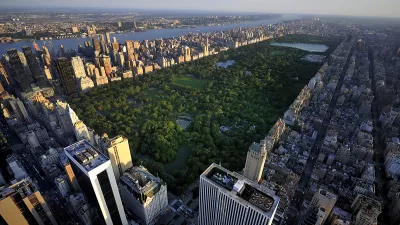"Currently in its greatest period of park expansion since the 1930s," New York City has shown a remarkable commitment to expanding its open spaces, but finding the resources to maintain them is another issue entirely, explains Caitlin Blanchfield.
The number of public parks has grown rapidly in New York City in recent years, providing restored ecosystems and incredible amenities for the residents of the city to utilize. However, maintenance for these green spaces require help from resources outside of the Parks Department.
"Cutting the ribbon is one thing," notes Blanchfield. "Keeping a park usable, healthy, and engaging for decades to come, quite another."
"With city and state funding providing just under 65 percent of current maintenance and operation budgets, ensuring that parks are properly maintained has fallen to strategic alliances of privately interested citizens and varying models of public/private partnerships committed to overseeing long-term sustainability and funding."
Perpetually underfunded maintenance budgets mean that each park would greatly benefit from its own conservancy or trust, but no one conservancy model works for all parks. The Central Park Conservancy president, Douglas Blonsky, notes that most of their funding comes from wealthy patrons who live around Central Park. Not all parks have the luxury of being located in affluent areas, where the residents can provide financial assistance.
Blanchfield observes that, "many other organizations, like friends groups working in small community parks, are entirely voluntary, leaving the places they steward at the whim of charitable resources." She goes on to examine several recent projects in the city to catalog how different parks plan to meet the maintenance challenges.
FULL STORY: Where Have All the Flowers Gone?

Alabama: Trump Terminates Settlements for Black Communities Harmed By Raw Sewage
Trump deemed the landmark civil rights agreement “illegal DEI and environmental justice policy.”

Study: Maui’s Plan to Convert Vacation Rentals to Long-Term Housing Could Cause Nearly $1 Billion Economic Loss
The plan would reduce visitor accommodation by 25% resulting in 1,900 jobs lost.

Why Should We Subsidize Public Transportation?
Many public transit agencies face financial stress due to rising costs, declining fare revenue, and declining subsidies. Transit advocates must provide a strong business case for increasing public transit funding.

Wind Energy on the Rise Despite Federal Policy Reversal
The Trump administration is revoking federal support for renewable energy, but demand for new projects continues unabated.

Passengers Flock to Caltrain After Electrification
The new electric trains are running faster and more reliably, leading to strong ridership growth on the Bay Area rail system.

Texas Churches Rally Behind ‘Yes in God’s Back Yard’ Legislation
Religious leaders want the state to reduce zoning regulations to streamline leasing church-owned land to housing developers.
Urban Design for Planners 1: Software Tools
This six-course series explores essential urban design concepts using open source software and equips planners with the tools they need to participate fully in the urban design process.
Planning for Universal Design
Learn the tools for implementing Universal Design in planning regulations.
Caltrans
Smith Gee Studio
Institute for Housing and Urban Development Studies (IHS)
City of Grandview
Harvard GSD Executive Education
Toledo-Lucas County Plan Commissions
Salt Lake City
NYU Wagner Graduate School of Public Service





























